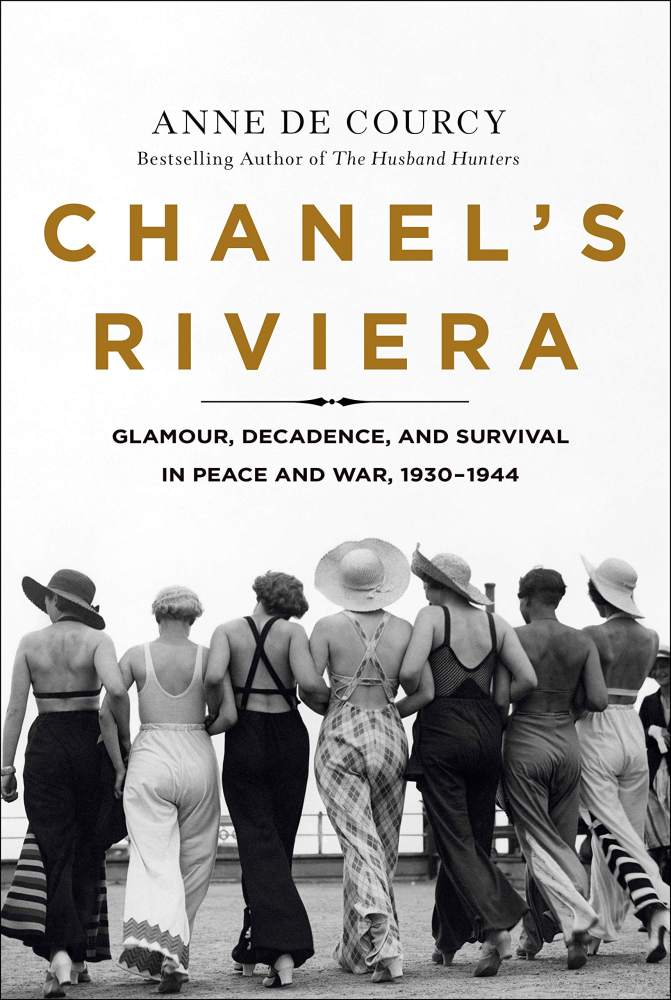
Three books on Coco Chanel offer new insights, historical tangents and fictional tales
- Gabrielle Chanel: Fashion Manifesto and Chanel’s Riviera focus on the factual, from the designer’s love of flowers to her wartime negotiations
- In historical novel The Chanel Sisters, Judithe Little introduces Antoinette, the youngest of the three Chanel girls
Non-fiction

Gabrielle Chanel: Fashion Manifesto
edited by Miren Arzalluz and Véronique Belloir
Thames & Hudson
It’s been 50 years since her death, in 1971, aged 87, but Gabrielle “Coco” Chanel’s story continues to fill new books, including this illustrated volume, published to accompany a 2020 exhibition at the Palais Galliera in Paris, the first retrospective of her work ever held in the city.
Edited by the director and curator of that museum of fashion and fashion history, the essays within spotlight “The Many Chanels”. She regarded truth and lies with equal disdain, historian Olivier Saillard writes, adding that the business of herself was her only true raison d’être. Little wonder, then, that she chose models who resembled her and trained them to move and pose like her, hand on hip.
Fashion aficionados looking for new insights should read Amy dela Haye’s essay, which examines Chanel’s love of flowers (not just her signature camellia) and use of them in her work – perhaps unexpected in someone who rebuffed the frou-frou, masqueraded in men’s clothing, and generally rejected ornamentation. But in the 1930s, Chanel decorated her clothes and hair with flowers, and, in addition to accessorising with floral-inspired jewellery, scented herself with jasmine and rose.
We’re reintroduced to Chanel’s tailored suits, two-toned slingbacks, quilted handbag and other familiar staples representing her life and art of living. That extended to the style of her homes, although interior design was one of the few opportunities the grande dame never fully realised.

Chanel’s Riviera
by Anne de Courcy
Weidenfeld & Nicolson
So much of Chanel’s life has been documented it feels as though all Anne de Courcy could do was to pin a hem to allow an extra sliver of revelation. So Chanel’s Riviera, as she warns, is neither a biography of the French couturier, nor a history of that glamorous stretch of French coastline.
Among its inhabitants were writers, movie stars, aristocrats, royalty – and Chanel, around whom society buzzed. Lavish name-dropping, however, reduces this book to a Who’s Who, with tangents (so many affairs!) that take the author away from her subject and location. It was on the Cote d’Azur that Chanel built La Pausa,“her only real home”. She lived there with one of her lovers, Hans Günther von Dincklage, a German diplomat, during the summer of 1942,the consequences of which are later revealed.
The author’s period of scrutiny, 1930 to 1944, is one of two ages – decadence and survival –as Nazism and Italian fascism march through southern France. Circling back to Chanel, de Courcy points at the designer’s anti-Semitism, which could be “seen in part as an expression of the national attitude”, she writes.
Readers would be wise to speed through the first half to reach the war years. Eyebrows will arch especially at the strange episode in which Chanel attempts to broker peace between the Allies and the Axis powers.
Fiction

The Chanel Sisters
by Judithe Little
Graydon House
We will never know what really inspired the interlocking Cs in Chanel’s famous logo. One theory is that Coco Chanel designed the pattern as an homage to the monastery in France where she spent much of her childhood. The geometric patterns were a feature of the stained-glass windows in its chapel. Another is that the Cs are simply her initials. A third has the letters linking her eternally to Boy Capel, the English polo player who broke her heart by marrying someone else. His death in a car accident proved even more devastating.
All those details are embroidered into The Chanel Sisters, a historical novel narrated by Antoinette, the youngest of the three girls (Julia-Berthe was the eldest; two brothers made five). It wasn’t just that details about Antoinette were lacking, but that she had been dismissed as “pretty but not as clever”. The author believed differently, her research showing that Antoinette had as much business nous as her successful sister – dubbed Coco by officers who enjoyed her performances on stage singing about a lost dog.
Little lingers unnecessarily in Aubazine, telling of the siblings’ feelings of abandonment growing up in an orphanage after the death, in 1897, of their mother. She also overplays the sisters’ romances. But hers is a wonderfully imagined story of the two women who opened the Parisian boutique, Chanel Modes. Both will now be remembered.











